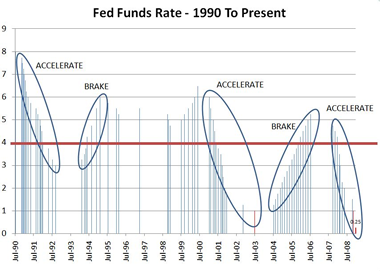The Natural Gas Fuel Alternative For Trucks
SEARCH BLOG: EPA and AUTOMOBILES
Last week, I wrote about the unreasonable and unattainable 30 mpg light truck mandate by the EPA. Using the example of the 2010 GMC Sierra hybrid light truck that gets about 20.5 mpg overall, it is obvious that the 30 mpg standard cannot be met by existing technology unless a lot of very small vehicles are classified light trucks to offset the shortfall from the full-sized light trucks... the volume leaders in that segment.
I also wrote that if the EPA gave each non-petroleum fueled vehicle an arbitrary rating of 150 mpg that the standard might be met with a full push toward compressed natural gas powered vehicles (CNG). There is precedent within the existing regulations... also cited in my earlier post.
How could this be done? Here is a portion of a 2004 MSNBC article:
Boost for natural gas cars: Home fuelingI had also suggested a $5,000 tax credit for purchasing a light truck powered by CNG. That would be used to offset the higher vehicle cost and the home fueling station.
Honda, partner will sell unit in 2005, starting with California
msnbc.comupdated 10:25 a.m. ET, Fri., Sept . 10, 2004After a year-long delay, Honda and a partner have announced they will sell a $2,000 home fueling station for natural gas cars starting in the spring of 2005.
The real push would have to be in the rapid deployment of CNG commercial fueling stations. This is what it looks like now:
Natural Gas Fueling Station LocationsUnlike proposed battery changing stations that would require:To find sites that currently offer compressed natural gas (CNG), select a state on the map below. The database will generate a detailed list of stations verified to offer CNG. If you are interested in liquefied natural gas (LNG) stations, go to the Alternative Fueling Station Locator. This locator will also enable you to map CNG and LNG stations near a specific address or city location.
- a new production technology for vehicles that has not been thoroughly tested
- a whole new infrastructure of changing stations
And, as Rep. Nancy Pelosi herself stated:
“I believe in natural gas as a clean, cheap alternative to fossil fuels,” she said at one point. Natural gas “is cheap, abundant and clean compared to fossil fuels,” she said at another.The science is settled; the economics are settled; the way is clear; President Obama should lead the way for this change. All-electric or vastly improved hybrids may be a long term solution for meeting arbitrary EPA mandates, but they are not feasible for the arbitrarily short timeline established by the EPA.
..























